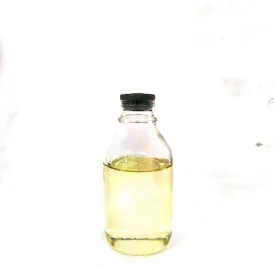Nonionic Surfactants Q&A: Everything You Need to Know
Nonionic surfactants are a vital class of chemical compounds that play a crucial role in various industries, including cosmetics, pharmaceuticals, agriculture, and cleaning products. These versatile molecules have unique properties that make them stand out from other surfactant types. In this Q&A article, we will dive into the world of nonionic surfactants, addressing common questions and shedding light on their applications, properties, and environmental impact.
Q1: What are Nonionic Surfactants?
Nonionic surfactants are organic compounds characterized by their lack of electrical charge in solution. Unlike anionic surfactants (which have a negative charge) or cationic surfactants (which have a positive charge), nonionic surfactants are electrically neutral. They are typically composed of a hydrophilic (water-attracting) head group and a lipophilic (oil-attracting) tail group.
Q2: What Are the Key Properties of Nonionic Surfactants?
Nonionic surfactants possess several essential properties, making them suitable for various applications:
Low Foaming: Nonionic surfactants generally produce less foam compared to their anionic and cationic counterparts, making them suitable for applications where excessive foaming is undesirable.
Compatibility: They are compatible with both anionic and cationic surfactants, allowing for the formulation of complex mixtures.
Stability: Nonionic surfactants are stable over a wide range of pH levels, which enhances their versatility.
Low Irritancy: They are often less irritating to the skin and eyes compared to some other surfactant types, making them suitable for personal care products.
Q3: Where Are Nonionic Surfactants Used?
Nonionic surfactants find application in a wide range of industries, including:
Detergents: Nonionic surfactants are commonly used in laundry detergents and dishwashing detergents due to their low foaming and excellent emulsifying properties.
Personal Care Products: They are prevalent in shampoos, body washes, and creams due to their mildness and emulsification abilities.
Agriculture: Nonionic surfactants are used in agricultural formulations to enhance the effectiveness of pesticides and herbicides by reducing surface tension and improving spray coverage.
Pharmaceuticals: They can be found in various pharmaceutical formulations, such as emulsions, creams, and ointments.
Industrial Cleaning: Nonionic surfactants are used for cleaning industrial equipment and surfaces where foaming should be minimized.
Q4: What Makes Nonionic Surfactants Environmentally Friendly?
Nonionic surfactants are generally considered more environmentally friendly than some other surfactant types for several reasons:
Biodegradability: Many nonionic surfactants are biodegradable, breaking down into harmless compounds over time, reducing their environmental impact.
Low Toxicity: They are often less toxic to aquatic life compared to some anionic and cationic surfactants.
Low Foam: Their low foaming characteristics reduce the risk of water pollution from excessive foam in wastewater treatment plants.
Q5: Are There Any Concerns About Nonionic Surfactants?
While nonionic surfactants are generally considered safe and environmentally friendly, it's essential to note that not all nonionic surfactants are equal. Some may be derived from petrochemical sources, raising concerns about their sustainability and environmental impact. Additionally, the specific chemical structure of a nonionic surfactant can affect its biodegradability and toxicity.
Conclusion
Nonionic surfactants are versatile and essential compounds used in a wide range of industries, offering unique properties that make them suitable for various applications. They are known for their low foaming, compatibility, and environmental friendliness. As consumer and environmental awareness continues to grow, the use of nonionic surfactants may become even more prevalent in products aimed at sustainability and safety. However, it's crucial to choose nonionic surfactants carefully, considering their source and specific characteristics to ensure they align with the desired environmental and performance goals.





